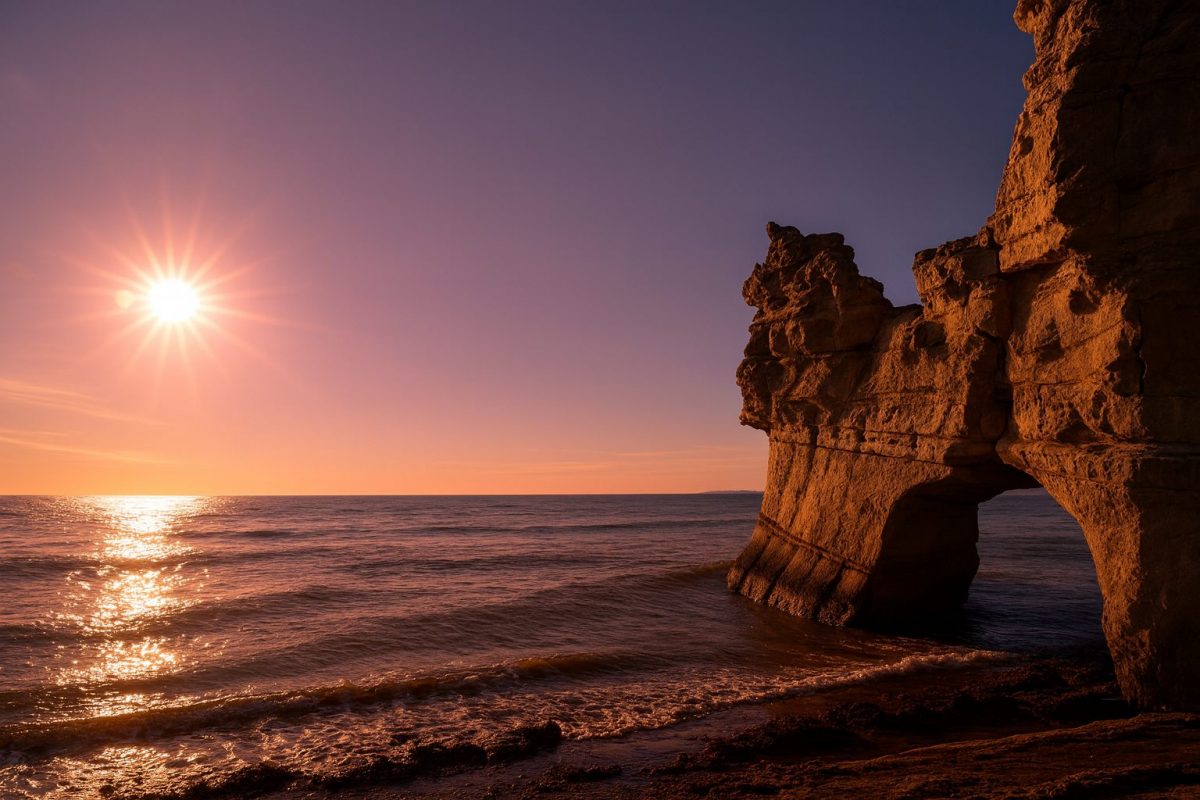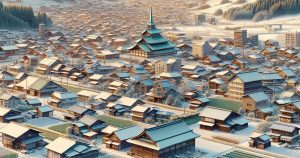| 人口 | 3,030 人 |
|---|---|
| 面積 | 162.59 km² |
| 人口密度 | 18.6 人/km² |
Otobe Town, located in the southwestern part of Hokkaidō within the Hiyama Subprefecture, faces the Sea of Japan and has thrived for centuries on fishing and agriculture. Historically, it was strongly influenced by Ainu culture, and during the mid-Edo period it prospered as a key herring fishing port alongside neighboring towns such as Esashi. The town’s name derives from the Ainu word “Oto-un-pe” (a river with a swamp at its mouth), referring to the present-day Himekawa River.
Covering an area of 162.53 km², approximately 81% of the town is forested. Its coastline has been designated as part of the Hiyama Prefectural Natural Park, where rugged cliffs, columnar joints, and unique coastal formations can be found. Mountains such as Mt. Otobe (1,017m) and Mt. Kurōdake (970m) rise to the east, while capes including Toppu-misaki, Maguro-misaki, and Tate-no-misaki stretch into the Sea of Japan. Villages are concentrated along the coast, where fishing and commerce developed historically. Today, Otobe continues to embrace its natural heritage, with both the sea and mountains shaping the livelihoods of its people.
Culture & Traditions
The culture of Otobe reflects a fusion of Ainu traditions and the history of Japanese settlement. Archaeological remains from the Jōmon period have been excavated here, showing that people have lived in this area for thousands of years. The prosperity of the herring fishery during the Edo period left a strong legacy, with cultural assets and historical records still preserved in the town.
After the Meiji period, agriculture and forestry developed alongside fishing. Today, rice paddies, soybean fields, and vegetable farms coexist with fishing ports, while dairy farming supports local households. Fresh seafood such as squid, pollock, salmon, sea urchins, and sea cucumbers enrich the town’s food culture.
Residents mainly speak the Hokkaidō dialect, but Ainu words survive in place names and traditions. Festivals are an important part of life in Otobe, with events such as the “Motowadai Marine Festival” and the “Onsen & Industry Festival” attracting both locals and visitors. Seasonal gatherings strengthen community ties while showcasing the town’s culture. Schools also emphasize regional education: children learn about farming, fishing, and local food traditions through hands-on activities. Otobe Town continues to embody a way of life rooted in “living with nature,” passing these values to future generations.
Specialties
- Otobe Rice: Cultivated in fertile fields with clean mountain water, Otobe’s rice is known for its stickiness and sweetness, ranking among Hokkaidō’s finest varieties.
- Kurokeshiko Soybeans: A highly nutritious and flavorful soybean variety, used in miso, tofu, natto, and other processed foods.
- Broccoli & Strawberries: Grown in a cool climate with sharp temperature differences, resulting in produce with strong sweetness and freshness.
- Surume Squid: Fresh squid from the Sea of Japan, enjoyed as sashimi or dried delicacies.
- Sea Urchins & Sea Cucumbers: Increasingly cultivated in recent years, now considered key marine resources of the town.
- Otobe Wine: Produced by Sapporo Seishu Industry, this local wine utilizes the area’s agricultural products.
Annual Events
- Motowadai Marine Festival: Held during the summer swimming season, featuring a unique “sea pool,” marine sports, and entertainment by the coast.
- Onsen & Industry Festival: A summer event (recently rebranded as the “Industry Festival” in September) highlighting local cuisine, hot springs, and specialty products.
- Community Bon Dance: Held annually on August 14, where townspeople gather to dance and celebrate.
- Yawata Shrine Grand Festival: A traditional Shinto festival held August 14–16, featuring mikoshi processions and festival floats.
- Enkatsura Forest Festival: Celebrated on the autumn equinox, centered around the ancient sacred katsura trees known as “Enkatsura.”
- Shibare Fureai Tomioka: A winter event held in late January, offering snow-country cultural exchanges and activities.
Access
- By Air: The nearest airport is Hakodate Airport, about 2 hours by car.
- By Train: There is no railway within Otobe. The nearest stations are Yakumo Station (JR Hakodate Main Line) and Shin-Hakodate-Hokuto Station (Hokkaidō Shinkansen).
- By Bus: The Esashi Terminal is the transfer hub. From there, Hakodate Bus operates the Hiyama Coastal Line via Otobe toward Yakumo.
- By Car: Accessible via National Route 229 along the coast. It is about 71 km from Hakodate and 12 km from Esashi.
Tourist Attractions
- Otobe Onsen – Hot springs in three locations within the town, including barrier-free facilities and traditional inns.
- Takise Coast “Shirafura” – White tuff cliffs stretching dramatically along the coastline, one of Otobe’s signature landscapes.
- Motowadai Seaside Park – Famous for its “sea pool,” selected as the only beach in Hokkaidō among the “Top 100 Swimming Beaches of Japan.”
- Enkatsura – Twin katsura trees fused together, over 500 years old and more than 40m tall, designated as one of Japan’s “100 Giants of the Forest.”
- Maguro-misaki Columnar Joints – Striking andesite columnar joints, designated as a Hokkaidō Natural Monument.
- Otobe Town Local History Museum – Exhibits Jōmon pottery, fishing history, and documents showcasing local cultural transitions.








